Crew Log - Tour of Montserrat
31st May 2002
We were fortunate to have an excellent tour guide for our visit, recommended by our friends on Windharp. Our guide was Sheppy, a local taxi driver, who put great effort into showing us all accessible parts of the the island and giving a first-hand report of what happened and what is being done to rebuild the community. Our visit was truly fascinating and we are very grateful to Sheppy for his enthusiasm.
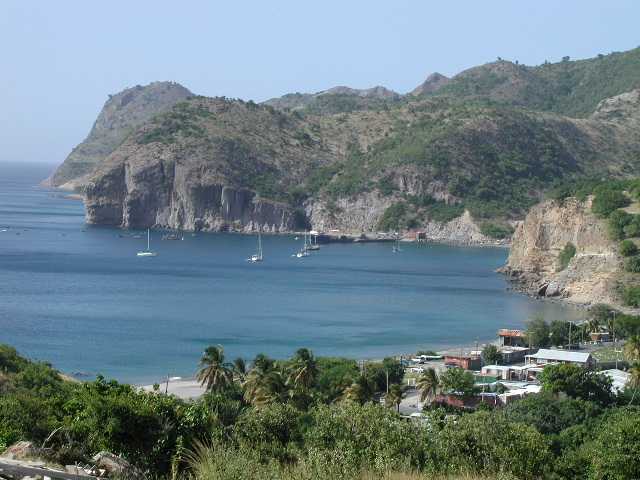
Little Bay anchorage, Montserrat.
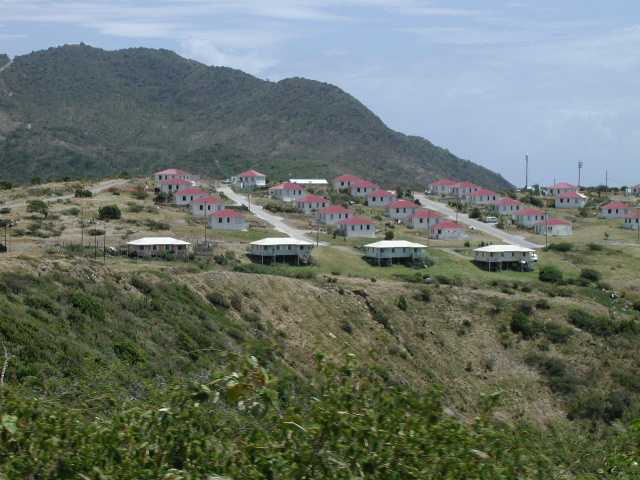
Construction of new homes in the north of the island.
The first part of our tour took us to the north part of the island, to see the areas where new homes are being constructed for those who lost their homes . We visited the makeshift heliport, which is now the only way in and out of the island by air, as the airport was destroyed. When viewing the destroyed airport and the lava flows nearby, Sheppy pointed out a fire engine, which had been fighting fires at the airport and broke down when the crew took flight from the area. The crew escaped unscathed but the fire engine still stands in the road where they abandoned it.
The northern part of the island is beautiful with lush green vegetation, the odd goat or donkey roaming wild. It is easy to envisage how beautiful the island was before it was savagely split in two by the eruptions.
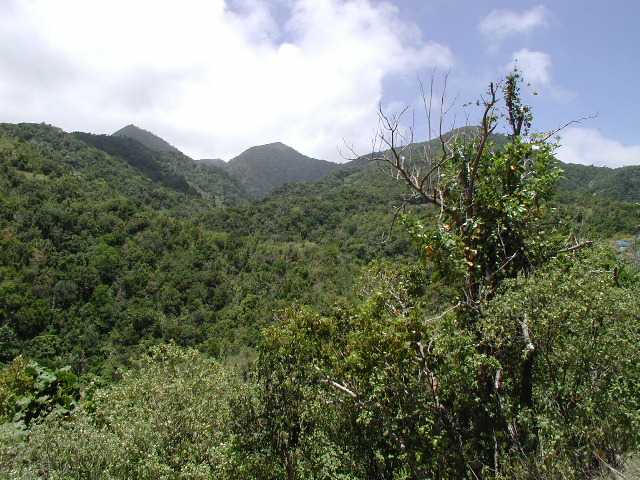
Lush vegetation in the north of the island.
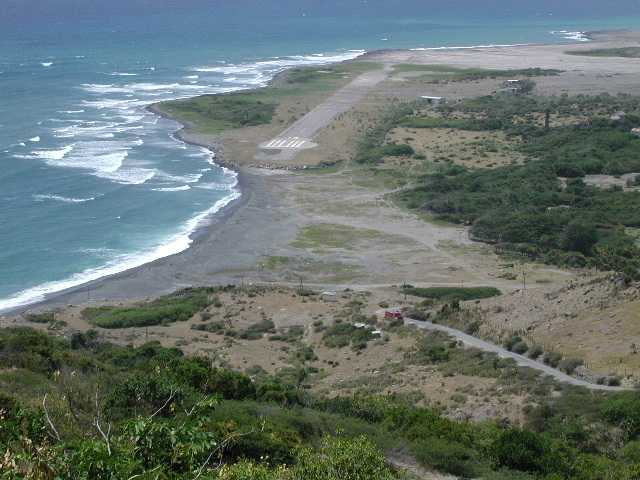
Destroyed airport with the stranded, abandoned fire engine.
We passed through Salem, which is now the largest town, although not as yet named capital. Sheppy stopped at a water spring, where it is said that if you drink the waters, you're fated to return some day to the island. We certainly hope we have the opportunity to visit again.
Sheppy was able to take us right into the deserted town of Plymouth and on the way there we passed through areas devastated by mud slides. Many houses in thoses areas are still uninhabited, although some residents have returned to their homes, against the advice of the scientists. In the case of further mud slides and heavy rain, those residents would be completely cut off from the rest of the island.
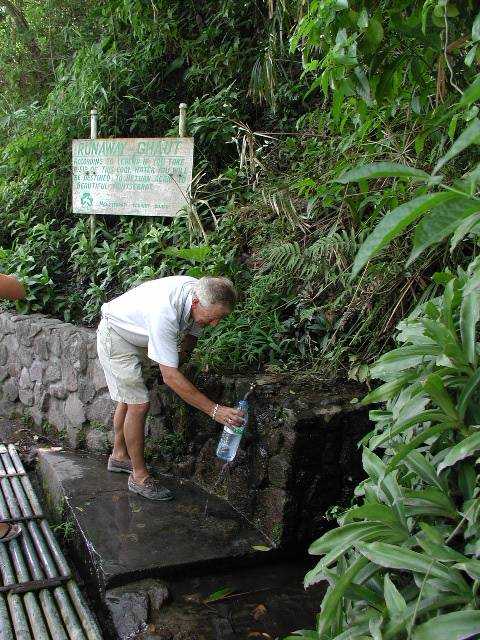
Tasting the waters of Montserrat.
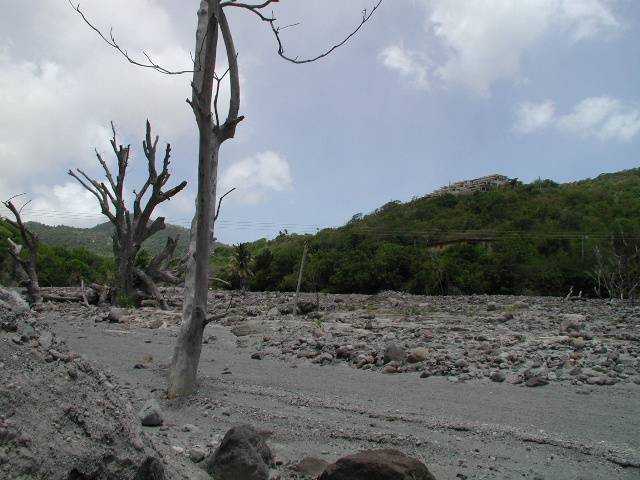
Areas devastated by mud slides.
The town of Plymouth resembled something from one of those post-apocalyptic, science fiction movies. Many buildings still standing, some boarded up, others just left as they were abandoned. Sheppy told us that some of the residents only had two hours to get out of their homes and were unable to take many possessions with them, as they had nowhere but public buildings, schools and the like, to live and space was too short. The whole infrastructure of the island was destroyed and had to be reconstructed. The government and post office works from temporary buildings in the north, the police station and jail have been rebuilt, all communications and power generation relocated. An inconceivable challenge for those remaining behind and the aid workers.
Sheppy showed us his newly built house in Salem and took us to a beach bar, in what was once a thriving resort in Old Road Bay (formerly the main anchorage area) for a delicious lunch.
At the end of what was one of the most fascinating visits we have ever made, we were certainly left with admiration for those who have remained on the island and what they have already achieved.
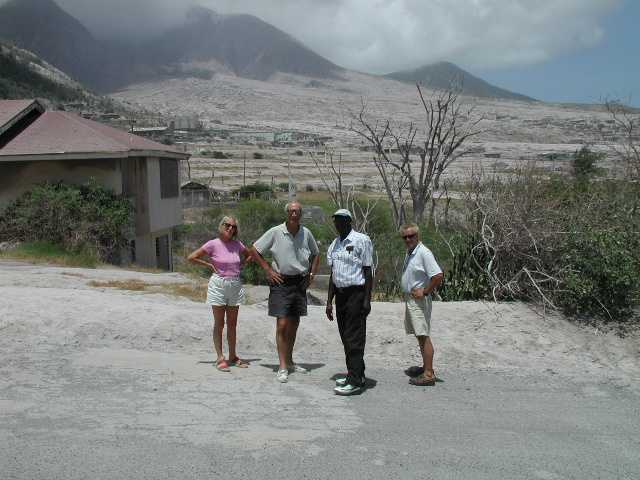
View over what remains of the city of Plymouth.
Diane, Graham, Sheppy & Phil
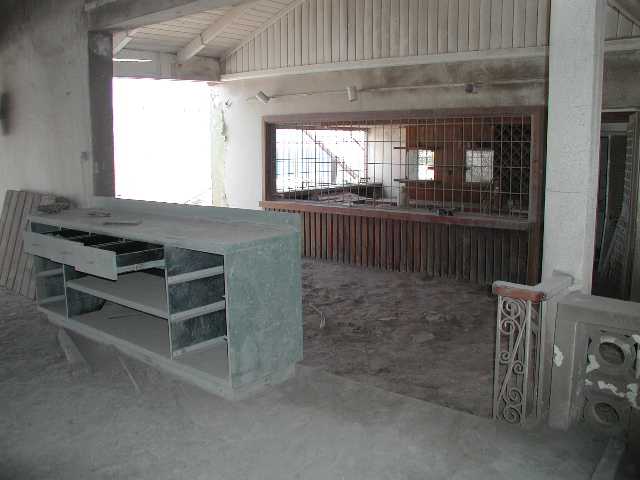
Reception in the former luxury hotel.
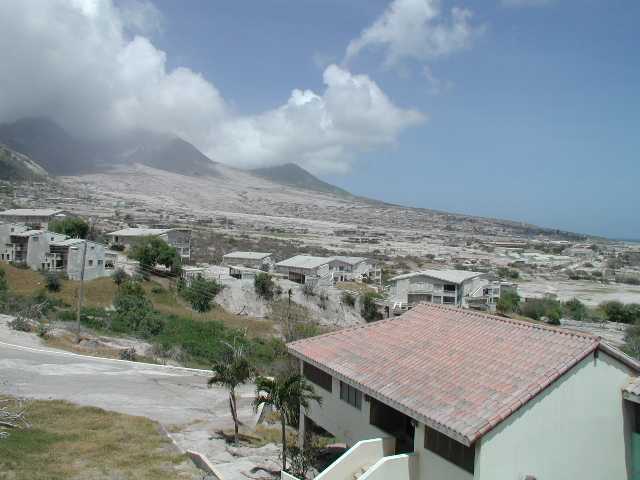
View of Plymouth, Montserrat
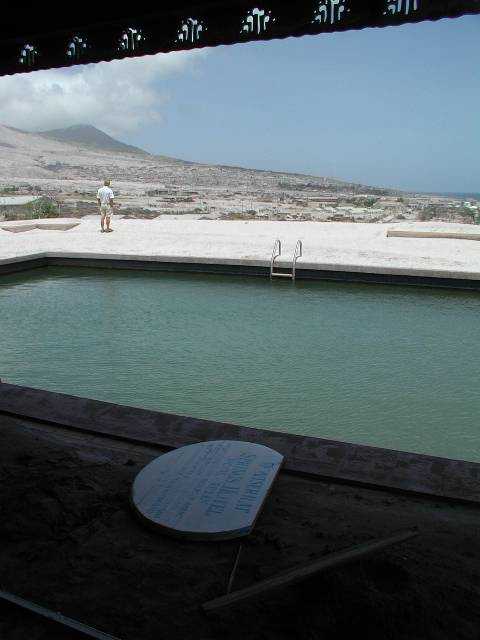
Phil looking over Plymouth from the pool.